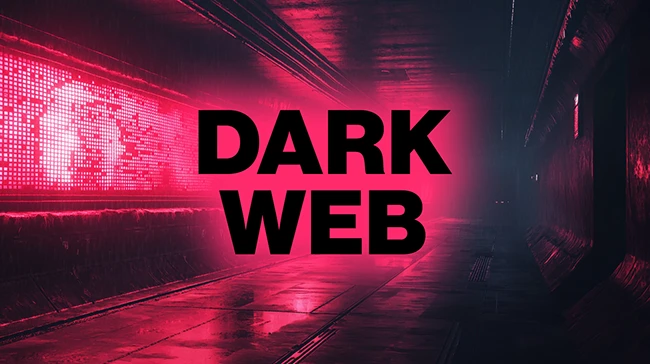
Understanding the Dark Web: Myths and Realities
The phrase “dark web” often brings to mind images of hackers in hoodies, secret marketplaces, and illegal activities that operate beyond the reach of law enforcement. Popular culture has painted the dark web as a shadowy corner of the internet where only criminals dwell. While there is truth to some of these images, much of what people think they know about the dark web is based on myths or exaggerations.
To truly understand the dark web, it is important to separate fact from fiction. This article will explore what the dark web really is, how it differs from the rest of the internet, what goes on there, and how to approach the subject without fear or misinformation.
The Three Layers of the Internet
The internet is often described as having three layers.
Surface Web
This is the part of the internet most people use every day. Websites indexed by search engines like Google, Bing, or Yahoo fall into this category. News sites, e-commerce stores, and social media platforms are all on the surface web.
Deep Web
The deep web includes content not indexed by search engines. Examples include private databases, online banking portals, academic journals, and company intranets. Accessing the deep web is legal and happens constantly. Whenever you log in to your email or university portal, you are entering the deep web.
Dark Web
The dark web is a small portion of the deep web. It requires special software such as the Tor Browser to access. This layer is intentionally hidden, providing users with anonymity. While this anonymity can be abused, it also has legitimate uses.
Myths About the Dark Web
Myth 1: Everything on the Dark Web is Illegal
Reality: Not all dark web activity is criminal. While illegal drug markets, weapon sales, and counterfeit documents exist, there are also communities dedicated to privacy, free speech, and political activism. For people living in countries with censorship or surveillance, the dark web can be a safe space for communication.
Myth 2: Visiting the Dark Web is Illegal
Reality: Accessing the dark web is not against the law in most countries. What is illegal is engaging in unlawful activities there, such as buying stolen credit cards or hacking tools. Simply using Tor to browse hidden sites is not a crime.
Myth 3: The Dark Web is Enormous
Reality: Some people claim the dark web is hundreds of times larger than the surface web. This is misleading. The dark web is relatively small compared to the deep web and surface web. What makes it appear larger is the secrecy surrounding it.
Myth 4: Only Hackers Use the Dark Web
Reality: Journalists, activists, and whistleblowers often use the dark web to protect their identities. Platforms like SecureDrop exist to allow anonymous tips from sources. Even some regular users explore it out of curiosity, not criminal intent.
Realities of the Dark Web
While the myths are worth clearing up, the dark web does have risks that should not be ignored.
Criminal Marketplaces
There are marketplaces selling illegal goods, from drugs to firearms. These markets often operate like e-commerce platforms with ratings and reviews. Law enforcement agencies frequently monitor them and conduct takedowns.
Stolen Data
Compromised personal information, credit card numbers, and login credentials are often bought and sold on the dark web. Data breaches from major companies usually end up here.
Malware and Scams
Many dark web sites are designed to trick visitors into downloading malware or falling for scams. Without strong security practices, users can become victims very quickly.
Anonymous Communication
On the positive side, the dark web allows for secure communication. Political dissidents, whistleblowers, and citizens in heavily monitored states rely on it to speak freely without fear of retaliation.
How People Access the Dark Web
The most common way is through the Tor Browser, which routes internet traffic through a series of servers to conceal the user’s identity. Websites on the dark web often have addresses ending in “.onion,” which cannot be accessed through standard browsers.
There are also search engines designed for the dark web, though they are far less efficient than Google. Many sites are only discoverable through direct links or community forums.
Staying Safe if You Explore
For those who are curious and want to explore, safety should always come first. Here are some guidelines:
Use Security Tools: Install reliable antivirus software and keep your operating system updated.
Avoid Downloads: Do not download files from unknown sites. Many contain malware.
Never Share Personal Information: Keep your real identity completely separate from dark web activity.
Use a VPN: Combining Tor with a VPN adds an extra layer of protection.
Be Skeptical: Many marketplaces and services are scams. Always assume a site could be untrustworthy.
The Positive Side of the Dark Web
It is easy to focus on the negative aspects, but the dark web also provides unique benefits:
Privacy: For individuals concerned about tracking and data collection, it offers a higher level of anonymity.
Free Speech: In countries where the internet is censored, the dark web serves as a safe place for political discussion.
Whistleblowing: SecureDrop and similar tools give whistleblowers a channel to share information with journalists safely.
Conclusion
The dark web is neither a playground for cybercriminals nor a forbidden space for ordinary users. It is simply a part of the internet that prioritizes anonymity. Like any tool, it can be used for both good and bad purposes. Understanding the myths and realities of the dark web is crucial for anyone interested in cybersecurity.
Rather than seeing it only as a dangerous underworld, we should recognize it as a complex environment with legitimate and illegitimate uses. With proper precautions and a clear understanding, the dark web can be approached without fear and with a balanced perspective.